I’m thrilled to introduce you to a bird that wears a natural crown – the Crowned Plover birds ( Vanellus coronatus). This feathered friend might not live in a palace, but it certainly commands attention across the grasslands of Africa with its regal bearing and distinctive appearance.
The crowned plover isn’t just another pretty face in the bird kingdom; it has some idiosyncrasies that can make you smile or even let out a chuckle.
It’s quite possible you’ve heard the crowned plover by a different title – its alias, the Crowned Lapwing. ‘Plover’ or ‘lapwing,’ it’s the same esteemed bird with vanity-worthy headgear. It’s not all about good looks for these birds, though; they have interesting lives full of rituals, patterns, and hearty appetites.
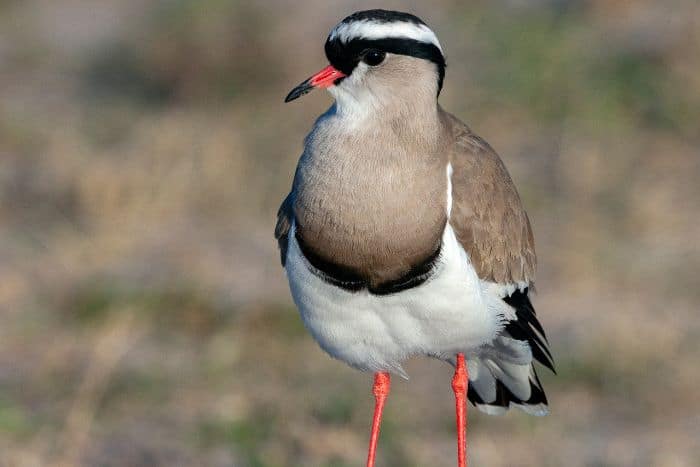
Keep your binoculars handy as we prepare to venture into their love story, which is as intricate and dramatic as any royal affair. Trust me, you won’t need reality TV when you have the crowned plover’s romantic escapades to observe!
The Courtship Dance: Mating Rituals and Rainbow Eggs
When spring unfurls its warm embrace, the Crowned Plover, or ‘Crowned Lapwing’ as you might hear it called, begins a courtship that’s as serious as any medieval knight’s quest for love. With a dramatic display of sounds and struts, the male plover doesn’t shy away from showing off his moves to win over his feathered lady.
Take a look at this funny video below to see how they twist and turn around! 🙂
What’s noteworthy about these birds is their monogamous nature. Once they’ve paired up, they stick together, and I mean through thick and thin. They opt for ground-level real estate to build their nests, usually a simple scrape on the ground, unadorned and open, which might seem a bit risky given the predators around.
Now, the eggs of the crowned plover are something of an avian art piece. Each female typically lays about two to four eggs, painted in a palette of earthy browns and creams with speckled designs. It’s almost as if each egg is its own little canvas, boasting a unique pattern that provides camouflage among the African savannas and grasslands.
Guarding these precious eggs is no joke. Both parents are quite the tag team, taking turns to incubate and throwing in some pretty clever distractions to lure potential threats away from their clutch.
Spotted in the Grass: How to Identify a Crowned Plover
I recognize that when you’re out in the grasslands or savannas, figuring out which feathery friend is which, can be quite the puzzle. The Crowned Plover, however, has distinct features that set it apart.
Keep an eye out for a bird around the size of a common pigeon, flaunting bold black and white patterns on its head, brown-greyish wings and chest, and a white belly – that’s our crowned plover. These birds sport a headpiece that would make royalty envious: a sleek black crown bordered by white stripes, which is why they’re considered the ‘Crowned’ Plovers.
Furthermore, their legs are long and bright red and their beaks are pointy and medium long and half black and half red. Crowned plover weigh about 200 grams.

Beyond the distinctive headgear, you can identify these birds by their behavior. When threatened, they have a distinct ‘broken-wing’ act that’s designed to lure predators away from their nest. This act is quite a dramatic performance and might just win them an award for best actor in the Bird Kingdom.
They are also recognized for their loud ‘kleep-kleep’ calls and a tendency for dramatic displays of fanning their tail feathers.
It’s not unusual to see a crowned plover literally running circles around an intruder in a bid to protect its territory – a sight that’s as amusing as it is admirable.
Misidentification can happen, especially with the similarity in size and shape to other plovers; a common mix-up is with the blacksmith plover, but you’ll soon notice the blacksmith lacks the crowned plover’s regal headwear.
A Gourmet in Feathers: The Crowned Plover’s Diet
The diet of a Crowned Plover bird isn’t what you’d call extravagant, but it’s certainly specialized. These birds are primarily insectivores, preferring a meal composed of beetles, termites, and other small invertebrates they can find scuttling across the ground. This makes them an essential part of the ecosystem, acting as natural pest controllers.
Yet, it’s not just about what they eat; it’s also how they eat. Plovers are known for their distinctive foraging behavior. Rather than using their keen vision alone, they have a fascinating technique called ‘foot-trembling‘. By tapping their feet rapidly on the ground, they mimic rainfall, encouraging worms and insects to surface. For crowned plovers, it’s a clever survival strategy.
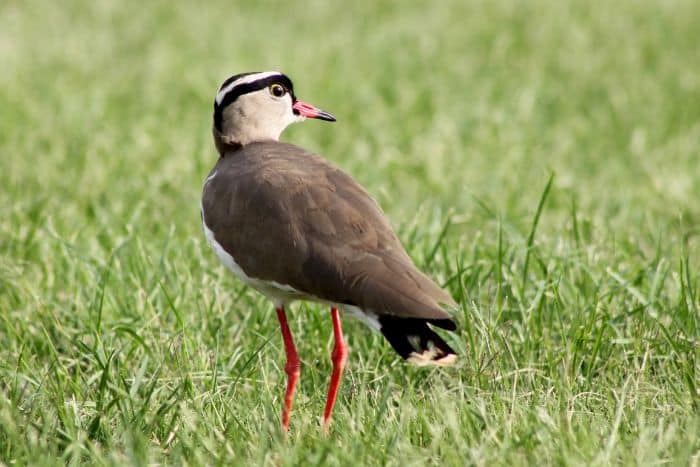
Ever wondered where these birds like to hang out when they’re not dazzling us with their culinary footwork or nurturing their patterned eggs? Stick around, and I’ll take you on a trip across their territory map in the following section.
The Crowned Plover’s location and habitat.
This resilient bird has spread its wings across a variety of landscapes in Southern, Eastern, and even parts of Western Africa. I want to give you the real scoop on where to find these feathered friends, and throw in a little extra for those who might mistake their cousins for them.
Perhaps you envision them exclusively in the savanna, hobnobbing with zebras and wildebeests, but crowned plovers are more versatile than you’d think. Alongside these iconic grasslands, they are quite at home making pit stops in farmlands and even airport grasslands, where their presence is both amusing and bemusing to onlookers.
Their adaptability means you might spot these birds frolicking in habitats ranging from semi-desert areas to lush wetlands. The key to their comfort seems to be open ground and short grass, which allows them to keep an eye out for both predators and prey.
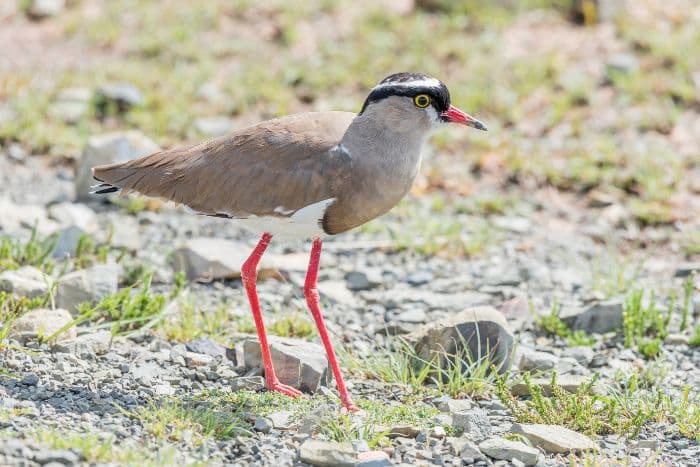
Clearing up the confusion between Crowned Plovers and Three-Banded Plovers.
Now, regarding confusion between the crowned plover and the three-banded plover: they are indeed separate species.
While they share a family name, ‘Plovers,’ telling them apart is fairly straightforward once you get the hang of it. The crowned plover sports a distinctive ‘crown’ of black plumage bordered with white, whereas the three-banded plover has, as you may guess, three conspicuous bands across its chest.

The Circle of Life: Understanding the Crowned Plover’s Lifespan
How long does this regal bird grace our planet with its presence? Research into the Crowned Plover or Crowned Lapwing reveals that their average lifespan in the wild usually spans from 10 to 15 years, although, in captivity, with a predator-free environment and a regular diet, they might outlive these statistics.
Their survival hinges on their adaptive traits in the face of predators, climatic challenges, and human encroachment on their habitats.
With a lifespan that rivals that of our common household pets, these birds are emblematic of wild resilience and beauty.
The Crowned Plover: Conservation status.
The Crowned Plover, also known as the Crowned Lapwing (Vanellus coronatus), is classified as a species of “Least Concern” on the International Union for Conservation of Nature (IUCN) Red List, and even growing in numbers.
The “Least Concern” status indicates that the species is not currently facing a high risk of extinction. However, it’s important to note that conservation statuses can change over time based on new information and assessments.
My Final Conclusion.
So let’s give a winged salute to the Crowned Plover birds! May it continue to rule its grassy kingdom with impressive endurance and a dash of quirky charisma for many years to come. And the next time you spot one during your outdoor adventures, remember, you’re not just looking at a bird; you’re witnessing a survivor navigating through the circle of life, one flap at a time.
If you have any more questions about this bird, please feel free to leave them down below in the comment section or join me on my social media channels for lots more pictures, videos, and stories about my travels to Africa!
I wish you happy travels!
Kind regards,
Lizzy
I now have a YouTube channel as well!
YouTube
Hello Africa travellers!
Who am I? Well, the least you can say is that I am quite crazy about Africa, its nature, its climate, its culture, and more.
As a young woman in my twenties, I had already traveled to several African countries by traveling along in an overlander on my own and mostly camping ( or glamping ) and just fell in love with the diversity of it all.
So much, so that at the age of 26, I went back to university to study biology, which, unfortunately, I couldn’t finish because of health reasons (yes, I got sick from a tropical disease, oh cynicism). But this did not stop my dream of traveling back to Africa several times, and I still do.
My dream was back then to leave Europe and go study animal behavior, especially the elephants (sure, that’s every girl’s dream haha), but I am also very much intrigued by hyenas and other “ugly African animals“.
So, I “kind of” have a little bit of a scientific approach to my articles, when I write about African birds, for example. And most of all: the passion.
But life goes on, you move from one side of the country to the other, you get sick again and top it off with lower back problems, and before you know it, you are over 50 hahaha!
Now, I still travel to Africa, but take it a bit “easier” than the good old camping days, and stay in comfortable, yet affordable accommodations, together with my husband Wouter.
These are some of the countries I have traveled to: Kenya, Tanzania, Zanzibar, Malawi, Zambia, Zimbabwe, South Africa, Namibia, Botswana, Tunisia, and a little bit of Lesotho LOL .
While clearly not being African territory, but Spanish, I also visited Gran Canaria and Tenerife, and location-wise, I consider them “African”, because of their climate and nature, sue me :-p
The last trip I took was to South Africa in the year 2023, and it sure got the fevers for Africa back! From the Barberton mountains to the Drakensberg and the Southcoast, one month wasn’t enough at all to see the whole country, so we’ll be back! At ease and with a little bit more luxury than in my younger days haha!
I wish you happy travels!
Kind regards
Lizzy

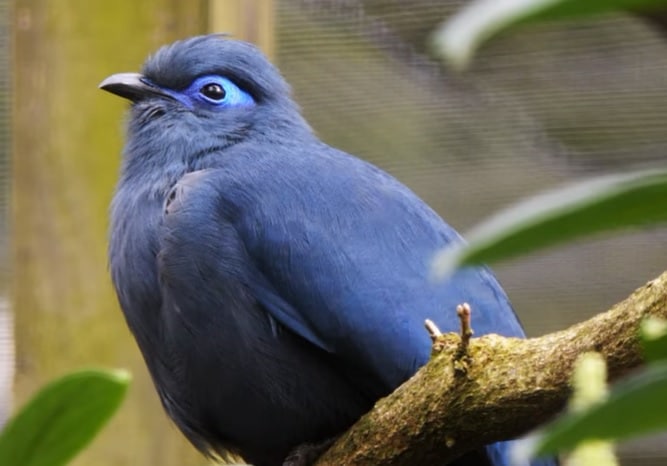


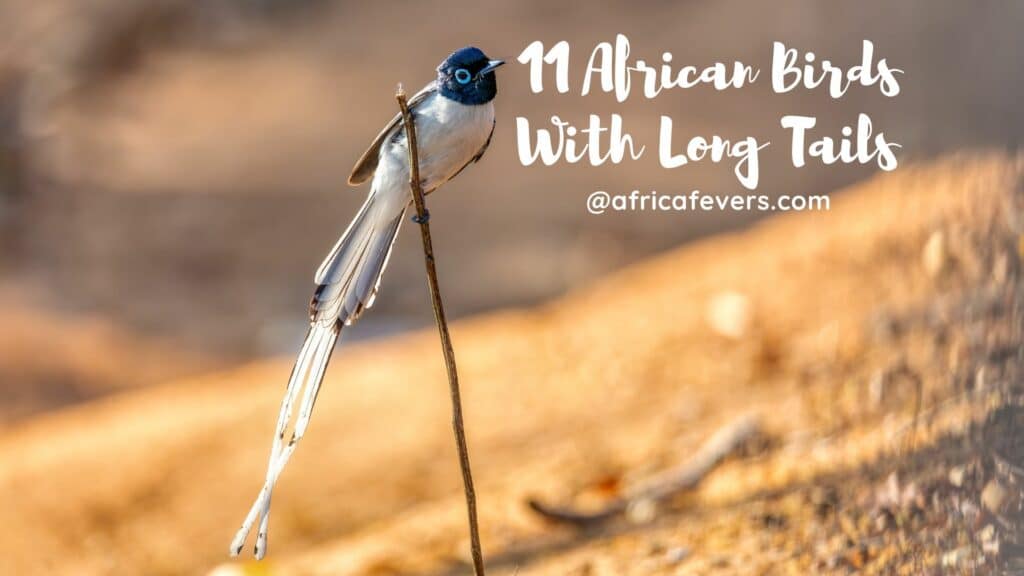



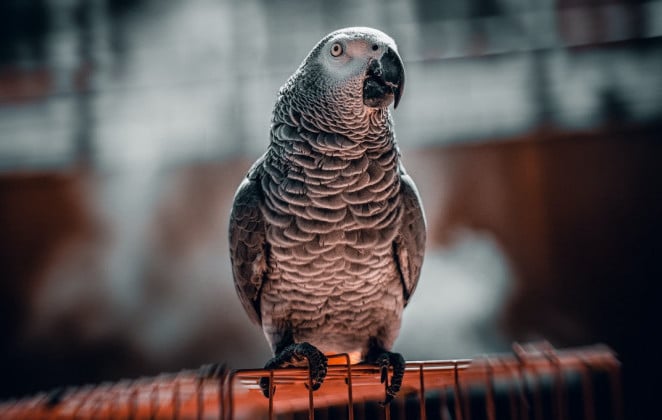
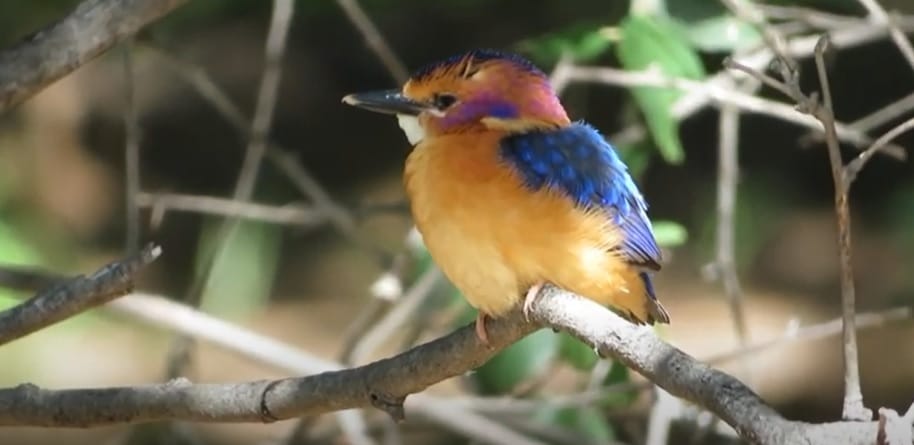

Hi Lizzy! I hope you are doing well!
The Crowned Plover, or Vanellus coronatus as it’s scientifically known, is truly a marvel of nature. Its ability to thrive in dry open habitats across much of sub-Saharan Africa is a testament to its adaptability and resilience.
It’s fascinating to think about the various survival strategies this bird must have developed to thrive in such environments.
Thank you for sharing!
Best regards,
Idem
Hello Idem!
Thanks for your comment and I wish you happy birdwatching!
Lizzy
What a captivating insight into the lives of Crowned Plover birds! 🦚 The courtship dance and rainbow eggs are truly fascinating. I’m curious, have you ever observed other bird species adopting a similar monogamous nature and intricate courtship rituals? It’s intriguing how the Crowned Plover’s distinctive features not only make them visually stunning but also aid in their survival. Do you have any tips for bird enthusiasts trying to identify these regal creatures in the wild, especially with potential confusion with other plover species? Looking forward to more delightful stories about these magnificent birds! 🐦✨
Hello Hanna!
Thanks so much for your positive comment and very welcome to my site!
To easily identify African birds, I would definitely recommend using expanded books like ‘Robert Birds of Southern Africa”, it is one of the best-identifying books out there!
I wish you happy birdwatching!
Lizzy